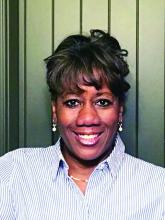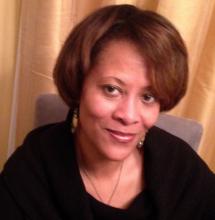One of us practices in the “new south” community of Charlotte, N.C., “a red state”; the other is in the “blue bubble” of Washington. In our respective polarized zones, the divergent reactions we heard about the presidential candidates were akin to projective responses to Rorschach tests.
As mental health clinicians, we knew that the country was wounded and in need of healing long before the outcome of the unconventional and acrimonious 2016 American presidential race. So, we were concerned about how patients, clinicians, and divergent communities would go about healing after an 18-month pre-election slugfest that revealed bigotry that persists more than 150 years after the Civil War.
Background of ‘two sides’
None of the nasty rhetoric delivered by our now president-elect or the clearly defensive responses we heard from our former secretary of state were going to be easily forgotten after Nov. 8, 2016. As the process unfolded, however, the voice of psychiatry, with some notable exceptions (the blog of Justin Frank, MD, for example), was absent from the public dialogue.
Nevertheless, writing in June of this year, Bill Moyers and Michael Winship summed up the private assessment of many professionals and the fears for many of a Trump presidency:
There is a virus infecting our politics and right now it’s flourishing with a scarlet fever. It feeds on fear, paranoia and bigotry. All that was required for it to spread was a timely opportunity – and an opportunist with no scruples. ... There have been stretches of history when this virus lay dormant. ... Today its carrier is Donald Trump, but others came before him: narcissistic demagogues who lie and distort in pursuit of power and self-promotion. Bullies all, swaggering across the landscape with fistfuls of false promises, smears, innuendo and hatred for others, spite and spittle for anyone of a different race, faith, gender, or nationality.1
Alternatively, some had a smoldering fear of the progressive agenda to bring “others” – more women, African Americans, Latinos, the LGBTQ community, Muslims, and the disabled – securely under the tent of American democracy. Others, especially the underemployed cohort in neglected and struggling communities in Middle America, were simply opposed to a continuation of “politics as usual,” a.k.a. Hillary Clinton, and were desperate for change.
The opposition views were summed up in the innuendo of the slogan: “Make America Great Again.” By the election, the tensions had begun to resemble the aggressive spirit of a sporting event: It’s “us” versus “them.”
Causes of concern
In the months leading up to the election, violent events strained the societal divisions. The police use of force2 resulted in the near-daily deaths of African American men and women and other people of color at the hands of police officers. The events built on a long and growing list of violent acts – the racially motivated shootings of nine men and women in a Charleston, S.C., church, the bombing injuries and deaths at the Boston Marathon, the shooting deaths of 20 children and 6 adults at Sandy Hook Elementary School, the homophobia-motivated shootings in a Florida nightclub – that have heightened levels of fear, anxiety, and concern for personal and family safety. For many, life has felt fragile and out of control, the perfect setup to motivate the electorate to cast their votes for the person they imagined had the most power and most interest in restoring their sense of control over their lives and, ultimately, their sense of safety.
Why the fear? A psychodynamic analysis
As psychiatrists trained in psychodynamic theory, we are quite familiar with the concept of identifying with the aggressor as a means of coping. The classic example is when a child watches his or her parents in an abusive relationship and identifies with the abusive parent in an attempt to avoid identifying with the victimized parent.
This dynamic is one that seems to have played out during this presidential election. By October 2016, Donald J. Trump already reportedly had insulted more than 280 people, places, and things on Twitter.3 Despite the evidence that Mr. Trump verbally bullied not only his opponents, but also the media, Latinos, women, the LGBTQ community, the Republican Party (his claimed party), and Muslims, people came out in numbers high enough to make him America’s president-elect. In the classic process of bullying his perceived enemies, those considered “the other,” he assigned names such as “crooked Hillary,” “little Marco,” and “lyin’ Ted” – just as a bully at school assigns names to the kid he’s decided does not have enough worth to be called by his given name.
He depicted women who accused him of sexual assault as either not being pretty enough to be worthy of assault or self-serving in their public accusations. Mexicans entering this country were referred to as “rapists and thugs.” African Americans were told that their lives are so bad that they “have nothing to lose” if they voted for a candidate who talked about erecting a wall to block out other people of color, and changing immigration laws that would banish an entire religion from entering our country.



